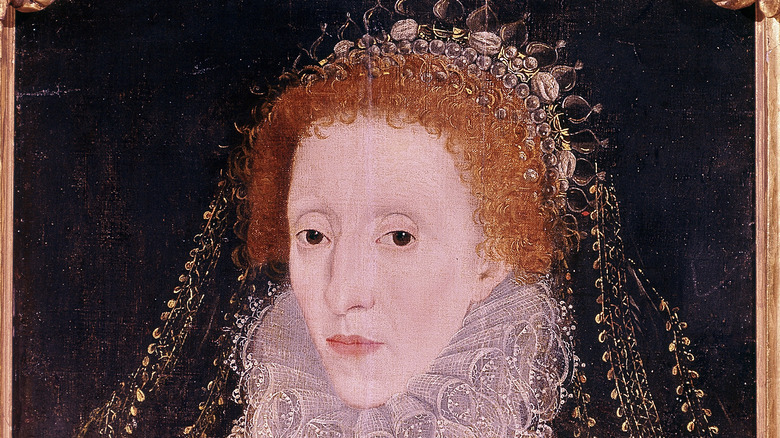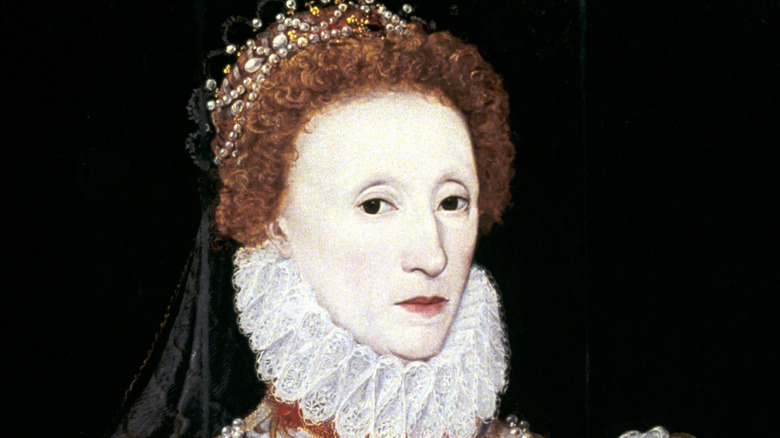Why Queen Elizabeth I's White Makeup Was Actually Dangerous
Often referred to as the "virgin queen," England's Queen Elizabeth I was the daughter of the notorious King Henry VIII and Anne Boleyn (via Biography). After the death of her sister, Mary Tudor, Elizabeth took the throne and became queen in 1558 at age 25. According to The Royal Family, her reign was filled with numerous accomplishments, including re-establishing the Church of England.
Besides the rivalry between her and her cousin, Mary, Queen of Scots (whom she ultimately executed), Elizabeth is also known for her iconic look. Her portraits suggest a youthful appearance, an ivory complexion, and red hair (per Smithsonian Magazine). This look, however, was a well crafted and controlled persona. To put it simply, she didn't necessarily look as good in person as she did in the paintings.
The "clown makeup" in which she is often portrayed was due to illness (via The New Zealand Herald). In 1562, when Elizabeth was 29, she became violently ill with smallpox and nearly died. She survived, but her face was left permanently scarred. Devastated, Elizabeth began to layer the makeup on to hide the ravages of the disease (per The Mirror).
According to Ranker, white skin in Elizabeth's time was idolized, further reason for her use of heavy makeup. Truly white skin symbolized both youth and fertility (via The New Zealand Herald). This makeup, however, was made of white lead and vinegar (per The Mirror). In other words, it was not safe, especially not for use on the face or neck. Unbeknownst to Elizabeth, it could cause hair loss, skin deterioration, and even death.
The makeup could have caused the queen's death
If the makeup didn't kill you or make you sick, the skin took on a gray pallor and became heavily wrinkled (via News.com). Even worse, the makeup would be left on for a week before being removed. The face cleanser used to remove it was just as deadly, as it contained mercury. Thus, it would take off the makeup, but corrode the skin and possibly lead to mercury poisoning.
Symptoms of mercury poisoning include memory loss, depression, and irritation, all of which Elizabeth had prior to her death. As her skin deteriorated, Elizabeth would pack on more makeup, ultimately making her skin worse and possibly making her ill. Per History Extra, even her signature red lipstick had mercury in it. Toward the end of her life, it is said that she wore inch-thick makeup.
According to Biography, Elizabeth ruled for 44 years, until her death in 1603. She famously never married or had children. The official cause of her death is unknown. Theories include blood poisoning, pneumonia, or cancer. Nevertheless, there is no doubt that her constant dose of lead and mercury led to her decline in health and, quite possibly, her death, as she displayed all the symptoms of being poisoned.

